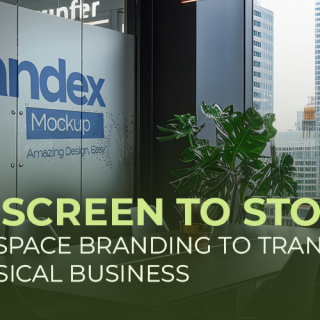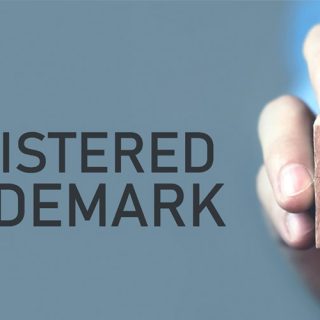Introduction: The Criticality of Consistency
Did you know that 60% of consumers avoid brands whose marketing feels inconsistent, even if they like the product?
This statistic reveals a critical disconnect: in today’s digital-first world, your website and social media are your first handshake, yet your physical space is the ultimate test of your brand’s integrity. If the sleek, modern vibe of your café’s Instagram doesn’t match the cluttered reality of your dining room, or if the cutting-edge aesthetic of your IT company’s website clashes with a drab, uninspiring office lobby, you’re not just losing ambiance—you’re losing trust and business.
Welcome to the strategic imperative of Space Branding. We’re not talking about hanging a poster; we’re talking about intentionally transforming your physical environment into a three-dimensional extension of your digital identity. As experts in design, development, and marketing, we understand that true success comes from this seamless integration.
This guide will show you how to move your brand’s personality from the 2D “Screen” into the tangible “Store” (whether that’s a restaurant, office, or retail space), ensuring a unified experience that drives word-of-mouth, enhances loyalty, and naturally boosts your online visibility through shareable moments.
What Is Space Branding?
Space branding is the art and strategy of visually expressing your brand identity through your physical environment. It involves designing your space — whether it’s an office, store, café, or vehicle — to tell your brand story, create emotional connection, and reinforce brand values.
Take a look at our portfolio to see how we’ve helped businesses transform their spaces into powerful brand experiences.
1. Translating Your Digital Identity to 3D
The foundational step of space branding is ensuring that the visual elements you meticulously crafted for your website and marketing materials are accurately and powerfully represented in your physical location.
Overview: This process is about converting your digital style guide—colors, typography, and logo usage—into tangible architectural and design features, creating instant, recognizable brand recall the moment a customer steps inside.
1. Color Palette Consistency (Hex Codes to Hues):
- Map your primary and secondary brand colors directly to physical materials (paint, lighting gels, furniture upholstery).
- Example for a Café: A vibrant, digital-native coffee brand’s neon accent color must appear in its physical signage or furniture to link the two experiences instantly.
2. Typography in the Environment:
- Use your brand fonts for all physical signage, menu boards, and wall graphics. Consistency here prevents a jarring visual shift.
- IT Company Example: If your brand font is clean and modern, use large, legible cuts of it in your lobby or meeting room names.
3. Logo and Iconography Application:
- Go beyond simple signage. Integrate your logo’s key shapes or iconic motifs into design elements like wallpaper patterns, floor inlays, or custom lighting fixtures.
- Food Industry: Use your logo’s shape as the cut out for packaging or custom trays.
4. Brand Voice in Signage:
- The language and tone used on your website should dictate the style of all physical text, from restroom signs to mission statements on the wall.
- Example: A playful, youthful brand should use fun, witty language; a professional bank should use concise, authoritative text.
2. Strategic Space Planning: Enhancing the Customer Journey
A successfully branded space guides the visitor’s experience, turning a simple visit into a memorable brand interaction.
Overview: This section focuses on using the physical layout and specific design features to control the customer flow, manage expectations, and create moments specifically designed for social sharing.
1. The “Hero Image” Entry Point:
- Treat your entrance or lobby as the “hero banner” of your website. It must immediately capture the brand essence and welcome the visitor.
- Restaurants & Cafés: A strategically placed, well-lit counter or a striking feature wall (often with the brand name) is key for this first impression.
2. Creating “Instagrammable” Moments (UGC Generators):
- Design specific, highly photogenic areas (a unique wall mural, a branded neon sign, specialized lighting). When customers take photos, they are effectively generating free, high-quality content that links the physical location to your online brand, directly improving your online visibility.
3. Way finding and Flow:
- For IT offices, design your layout to reinforce your values. Open, collaborative spaces communicate transparency; clear, well-marked departments communicate organization.
- For Food Industry, the flow from order point to pickup, or from entrance to table, should be intuitive, removing friction and aligning with your brand’s promise (e.g., fast-casual flow vs. fine-dining leisurely path).
4. Way finding and Flow:
Use distinct branding elements (different lighting, materials) to clearly segment different service areas—like a waiting area versus a presentation room in an office, or a retail shelf versus a tasting counter in a food store.
3. The Sensory Toolkit: Branding Beyond the Visual
While visuals draw them in, it’s the non-visual, sensory elements that forge a deep, lasting connection with your brand, ensuring your business is not just seen, but felt.
Overview: An often-overlooked area, this involves curating sound, scent, touch, and even taste to reinforce the brand personality and create an atmosphere that resonates long after the customer leaves.
1. Curated Auditory Experience (Sound Branding):
- Your background music must match your brand’s energy. A modern tech start-up might use upbeat electronic or instrumental music; a cozy café needs soft jazz or acoustic tracks.
- Avoid generic playlists; create one that reinforces your specific brand tone.
2. Tactile and Textural Consistency:
- The materials your customers interact with (furniture, menus, counter surfaces) must convey quality and align with your price point and brand ethos.
- Example: Using natural wood and linen conveys an organic, sustainable brand; polished steel and glass convey premium, high-tech luxury.
3. Scent Marketing:
- A unique, subtle scent can create powerful memory links. Many retail brands use custom signature scents.
- Food Industry: Beyond the smell of the food, consider a clean, branded scent for the entrance or restrooms to control the overall impression.
4. The Human Element (Staff as Brand Carriers):
- Staff uniforms, demeanor, and service protocols are the final, living elements of your space branding. They must embody the brand’s promised experience.
Conclusive Summary
The screen and the store are two sides of the same coin: your brand. Inconsistent experiences erode trust, but seamless Space Branding builds a powerful, unforgettable presence. By intentionally translating your digital identity, optimizing your space flow, and curating the sensory experience, you transform your physical location from a static business into a dynamic brand asset.
This transformation doesn’t just make your space look better; it actively generates buzz. Great space branding leads to better photos, more check-ins, positive reviews, and a greater number of geo tagged social media posts—all of which dramatically improve your online visibility and generate more business.
Your Challenge: This week, audit your main service area and identify one sensory element (sound, texture, or scent) that currently conflicts with your website’s brand identity. Fix it, and observe the immediate change in atmosphere and customer mood.
Ready to stop guessing and start creating a holistic brand experience? Contact Bright Pixel today for a comprehensive Space Branding audit and design plan to make your physical business as impactful as your digital presence.
Expert Insight
At Bright Pixel, we bring over a decade of hands-on experience in brand design, web development, and marketing strategy for businesses across Pune. Our team has successfully executed space branding and digital identity projects for cafés, IT companies, and retail brands, helping them create cohesive, high-impact customer experiences.
We combine design psychology, digital strategy, and local business insight to help brands move seamlessly from online presence to physical identity — building consistency, trust, and measurable growth.
Frequently Asked Questions
No. IT companies use it to attract talent and impress clients with lobbies and collaborative zones that reflect innovation. Any business with a physical presence benefits.
Great physical design creates "Instagrammable moments" which lead to User-Generated Content (UGC), check-ins, geo tagged photos, and positive reviews. Google values this local social proof and activity, which boosts your Local SEO ranking.
Yes. Space Branding doesn't require a full renovation. You can start with low-cost, high-impact changes like a cohesive color-matched paint refresh, custom-printed menus, or a branded lighting fixture.
Major elements (layout, key structures) should last 3-5 years. Minor sensory elements (seasonal scents, updated playlists, rotating wall art) should be refreshed quarterly or annually to keep the space feeling current and engaging.


